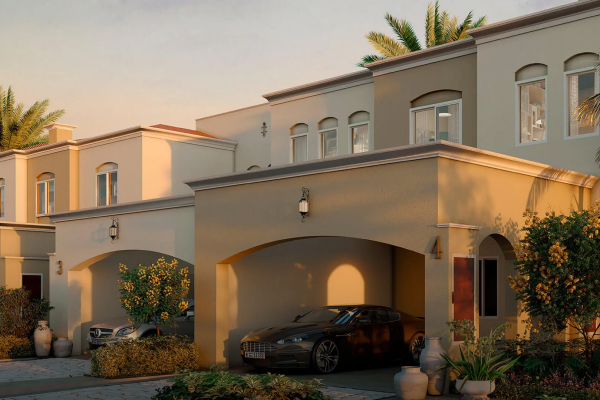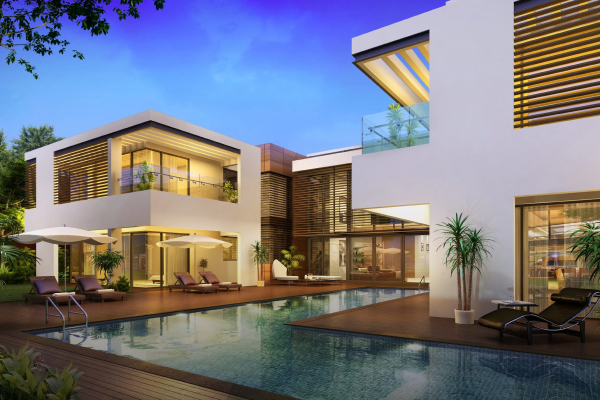Renovating in Dubai: What to Expect When Working with AAA-Dubai
Renovating a villa or home in Dubai isn’t just about upgrading finishes it’s about understanding the system that makes it possible. Between design approvals, material selection, and site coordination, the process can feel complex without the right guidance. Working with an experienced interior design company in Dubai, like AAA, means your renovation is handled with foresight where design, engineering, and compliance move together, not in silos. The result of trusting a highly experienced firm is that of a renovation that looks good, feels right, and functions well for years to come.

1. Why More Homeowners Are Renovating in Dubai
In recent years, villa and apartment renovations have increased across Dubai. Many homeowners now prefer improving existing properties rather than buying new ones.
Older homes, especially in areas like Jumeirah, Al Barsha, and The Springs, often need upgrades in layout, air-conditioning and insulation. Others simply want interiors that match today’s lifestyle open kitchens, better lighting, and multifunctional rooms for work and leisure.
Renovating also adds significant value to a property. A well-executed design can increase resale potential and reduce long-term maintenance costs. But in Dubai, renovation is rarely a straightforward aesthetic project it’s a technical one that demands careful planning.
2. The Renovation Process Step by Step
Most homeowners begin with a clear idea of what they want, but execution depends on how each stage is managed. Here’s what typically happens:
Step 1: Site Assessment
A professional team visits your property to evaluate its condition. Structural safety, existing MEP (Mechanical, Electrical, Plumbing) lines, and possible layout changes are reviewed. This helps identify what can be modified legally and safely.
Step 2: Design and Budgeting
Concept designs are created based on your needs and site conditions. Early cost estimation ensures the design matches the budget not the other way around.
Step 3: Authority Approvals
Before any physical work starts, drawings must be approved by relevant authorities such as Dubai Municipality, Trakhees, or Nakheel. The process includes verifying structural safety, fire exits, and HVAC systems.
Step 4: Construction and Supervision
Once approvals are cleared, execution begins. This is where having design and supervision under one roof saves time revisions and approvals happen in sync, avoiding the usual back-and-forth delays.
Step 5: Final Inspection and Handover
After completion, a final check ensures the site complies with both the approved plans and safety codes. Only then is the completion certificate issued, allowing full occupancy or leasing.
At AAA, every renovation follows this systematic approach. It allows clients to track progress confidently and ensures every decision from wall finishes to air-flow planning is backed by data and experience.
3. Navigating Dubai’s Approval System
Authority approvals are often where first-time renovators face the most confusion. Dubai’s building codes vary depending on the location and governing body of your property.
For example:
- Nakheel approvals are required in master-planned communities like Jumeirah Park or JVT.
- Dubai Municipality handles standalone villas and residential clusters across most older zones.
- Trakhees oversees properties in freehold areas such as Palm Jumeirah and JAFZA.
Each authority has specific submission requirements from architectural drawings to MEP layouts and timelines differ. A single missing document can cause weeks of delay.
Experienced firms like AAA handle this process directly. Their multidisciplinary team prepares all required drawings and coordinates with authority engineers, ensuring faster approval and smooth site mobilization.
4. What It Means to Work with a Full-Service Firm
Many homeowners hire separate contractors for design, approvals, and construction. That approach often leads to mismatched priorities and rework.
A full-service firm combines architecture, engineering, and supervision under one coordinated framework. At AAA, each renovation is supported by specialists from different disciplines who work together from the start. The architect ensures spatial harmony, the engineer verifies load and safety, and the MEP expert designs efficient systems.
This approach reduces revision cycles, avoids structural errors, and ensures the finished home mirrors the approved design. It also gives homeowners one point of accountability a single team that handles design, permits, and on-site quality control.
5. Cost, Timeline, and What to Expect
Every renovation project is unique, but understanding typical timelines helps set realistic expectations.
- Small to medium renovations (kitchen remodels, partial upgrades): 3–4 months
- Full villa renovations (structural or layout changes): 6–10 months
- Major reconstruction or additions: up to a year
Timelines depend on the scope, approval speed, and material availability. Early coordination is the key to keeping schedules on track.
Budgeting also varies widely. Labour, material quality, and imported finishes affect the final cost. That’s why AAA emphasises detailed BOQs (Bills of Quantities) before starting. Clear cost breakdowns prevent surprise expenses and help clients make informed trade-offs where to invest and where to optimise.
6. Common Renovation Challenges in Dubai
Even with meticulous planning, renovation can come with surprises. The most common issues include:
Hidden structural or MEP problems
Older villas often conceal outdated wiring or weak plumbing lines. Addressing these early avoids costly rework after walls are closed.
Authority re-approvals
If changes occur mid-project, new submissions may be required. Having in-house engineers who understand local codes keeps the process smooth.
Material and logistics delays
Imported finishes and fixtures can cause timeline disruptions. Local sourcing and pre-approved alternates help maintain progress.
Coordination gaps
Without consistent supervision, miscommunication between contractors can affect both quality and schedule. Regular site visits and progress reviews standard practice at AAA help keep every phase aligned.
7. Design and Material Trends in Dubai Renovations
Dubai’s homes are evolving to reflect modern lifestyles. Open plans, seamless indoor-outdoor transitions, and natural light dominate most renovation requests.
Current trends include:
- Smart space planning: Combining kitchen, dining, and family areas into multifunctional spaces.
- Energy-efficient upgrades: Double-glazed windows, improved insulation, and efficient AC zoning to manage rising energy costs.
- Natural finishes: Stone, textured plaster, and warm wood tones suited to Dubai’s light and climate.
- Biophilic design: Indoor plants, skylights, and courtyards reconnecting homes with nature.
AAA’s approach to renovation integrates these trends pragmatically. Instead of focusing on aesthetics alone, each decision considers performance how materials behave in Dubai’s humidity, how natural light impacts cooling, and how every square metre contributes to comfort.
8. The Value of Experience
Experience is often underestimated in renovation. Two homes with the same design brief can have entirely different outcomes depending on the team behind them.
AAA’s 40-plus years in architecture, MEP, and supervision across Dubai mean the firm understands both old-zone properties and modern freehold projects. That familiarity with local codes, climate demands, and construction practices translates directly into predictability fewer surprises, fewer delays, and higher long-term value.
Each project benefits from lessons learned across decades from structural detailing in large commercial builds to fine finishes in luxury villas. This cross-disciplinary insight allows AAA to deliver designs that are not just compliant, but intelligent and sustainable.
9. Renovation as a Partnership
A good renovation is collaborative. The best results happen when clients, designers, and engineers work as partners. Homeowners who are part of design discussions early on understand constraints and possibilities better, leading to faster decisions and fewer revisions.
At AAA, every client interaction starts with transparency. What’s feasible on site, what requires authority clearance, and what can be improved for long-term performance everything is explained clearly. This shared understanding forms the foundation of a renovation process that’s both efficient and satisfying.
10. Conclusion
Renovating a home or villa in Dubai is as much about planning as it is about aesthetics. It’s about designing spaces that respond to the city’s climate, regulations, and lifestyle demands.
When architecture, engineering, and compliance move together, renovation stops being a guessing game. It becomes a managed process one that saves time, controls cost, and enhances comfort.
With over four decades of experience, AAA continues to shape spaces that are beautiful, durable, and compliant from the ground up.
Thinking of upgrading your home or villa?
Reach out to AAA-Dubai for a consultation. Our team will help you assess your property, understand its potential, and create a plan that brings your vision to life the right way.

